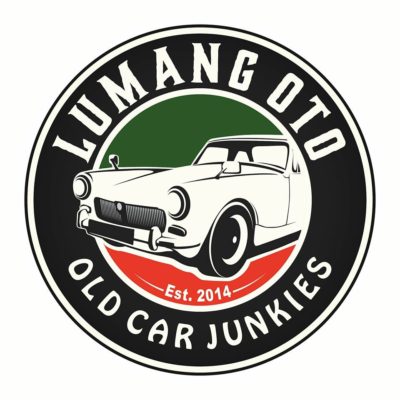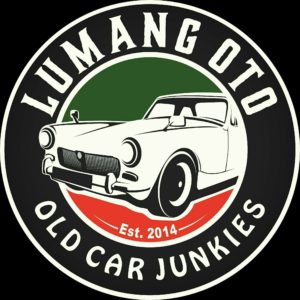 It was a phenomenon back in its day. Everybody wants one and it’s got to be the coolest vehicle you could ever own. From slaloms to desert races, the fiberglass kit car has dominated it. From the dunes of California, to the deserts of Mexico, to the college parking lot in Philippine Colleges, this unique off-road vehicle is nothing short of fascinating. With every success having humble beginnings, how did the craze ever start?
It was a phenomenon back in its day. Everybody wants one and it’s got to be the coolest vehicle you could ever own. From slaloms to desert races, the fiberglass kit car has dominated it. From the dunes of California, to the deserts of Mexico, to the college parking lot in Philippine Colleges, this unique off-road vehicle is nothing short of fascinating. With every success having humble beginnings, how did the craze ever start?
 Many times, automotive trends tend to overlap and influence each other. When hot rodding was still in its infancy, car guys on a budget wanted to take advantage of power to weight ratio so they came up with the idea of taking off as much weight as they could from a stock car to make it go faster. So, bodies of Model As and its contemporaries were removed leaving just the chassis and the motor. That led to the birth of the dragsters that were once called rails (because it’s basically what’s left out of the car – rails and motor). Out of this same concept, the easy-going surf culture of California’s youth in the late 50s brought this same frame and engine formula not to the drag strips, but to the sand dunes of Pismo Beach in California to become the predecessor to the buggy. And the idea became a craze that turned out to be almost as popular as surfing itself.
Many times, automotive trends tend to overlap and influence each other. When hot rodding was still in its infancy, car guys on a budget wanted to take advantage of power to weight ratio so they came up with the idea of taking off as much weight as they could from a stock car to make it go faster. So, bodies of Model As and its contemporaries were removed leaving just the chassis and the motor. That led to the birth of the dragsters that were once called rails (because it’s basically what’s left out of the car – rails and motor). Out of this same concept, the easy-going surf culture of California’s youth in the late 50s brought this same frame and engine formula not to the drag strips, but to the sand dunes of Pismo Beach in California to become the predecessor to the buggy. And the idea became a craze that turned out to be almost as popular as surfing itself.
 Enter Bruce F. Meyers, an artist and fiberglass fabricator who came up with the cool idea at the right time and the right place. Bruce himself is a hot rodder who runs cars for speed at California dry lakes, and also a surfer who admits he is one of those happy-go-lucky young Californian who does not care about tomorrow, and thinks surfing is more important than life itself. Seeing the rails racing around the sands in California, he came up with the bright idea of using a Volkswagen platform as he saw its potential because the Volkswagen Type 1 sits on a pan instead of a frame.
Enter Bruce F. Meyers, an artist and fiberglass fabricator who came up with the cool idea at the right time and the right place. Bruce himself is a hot rodder who runs cars for speed at California dry lakes, and also a surfer who admits he is one of those happy-go-lucky young Californian who does not care about tomorrow, and thinks surfing is more important than life itself. Seeing the rails racing around the sands in California, he came up with the bright idea of using a Volkswagen platform as he saw its potential because the Volkswagen Type 1 sits on a pan instead of a frame.
Bruce believes that a car is a combination of art and engineering. A car you fall in love with in its form is an art until you sit down and start it. All of a sudden, question of performance, power, handling and reliability becomes the issue. While old Ford rails can essentially do its job engineering-wise in the dunes, it’s far from being considered beautiful. For Bruce who values art as much as engineering, fabricating a fiberglass body with all the curves and forms matter. So he created the prototype buggy body he had envisioned, and married its artistically shaped design to proven reliability drivetrain of the Volkswagen Bug. And in 1964, the first VW Buggy called the Meyer’s Manx was born. Bruce still own the very first Meyer’s Manx today. The rest of the Buggies after chassis#1 were built on shortened Volkswagen Beetle platform.
The Meyer’s Manx (which by the way was named after the tail-less wild cat) became dominant in the sand races and unofficially monikered the Dune Buggy. In 1967, it won Mexico’s Baja 1000.
 Meyer’s Manx is a kit car therefore, each one is different from the other. It is so personalized that no 2 Manxs are exactly the same. From 1964 to the company’s demise due to tax-issues in 1974, Bruce Meyer was able to produce more than 5,000 Manx. However, because it is easily replicated as its engineering is so basic, there are more than 250,000 buggies all over the world known to exist patterned after the Manx, some have even reached the Philippine soil. However, those that were originally built from 64 to 71 under Bruce’s company are the holy grails of the Dune Buggy world.
Meyer’s Manx is a kit car therefore, each one is different from the other. It is so personalized that no 2 Manxs are exactly the same. From 1964 to the company’s demise due to tax-issues in 1974, Bruce Meyer was able to produce more than 5,000 Manx. However, because it is easily replicated as its engineering is so basic, there are more than 250,000 buggies all over the world known to exist patterned after the Manx, some have even reached the Philippine soil. However, those that were originally built from 64 to 71 under Bruce’s company are the holy grails of the Dune Buggy world.
In 2006, Bruce F. Meyers re-opened the company and started building new versions of the Meyer’s Manx with a much modern drivetrain and suspension, but still carries the same rudimentary concept of its vintage counterparts.
In its 50th anniversary, Manx from all over the world came over to celebrate the Buggy. Cars from all over the U.S. and Canada as well as those from Europe and as far as Asia and Australia all met at Big Bear in Southern California. Bruce F. Meyers was among the special guest and cars chassis#1, 2, 3 and 4 were all present. It was such a big event that Meyer’s Manx are all over anywhere you look.
 Lumang Oto’s presence was pure co-incidental as it was just a weekend getaway to Los Angeles’ city in the sky that brought me to the event. Little did I know that I will be in the middle of the grandest eyeball of the Buggies all over the world. From the crudest of the crude ratty rides to Concours quality (if there is such a thing) were all represented.
Lumang Oto’s presence was pure co-incidental as it was just a weekend getaway to Los Angeles’ city in the sky that brought me to the event. Little did I know that I will be in the middle of the grandest eyeball of the Buggies all over the world. From the crudest of the crude ratty rides to Concours quality (if there is such a thing) were all represented.
Check out and enjoy the photos of these cool old rides. Do you own a VW Dune Buggy? Share it with the Lumang Oto Community
Happy Lumang Oto Motoring




















Recent Comments